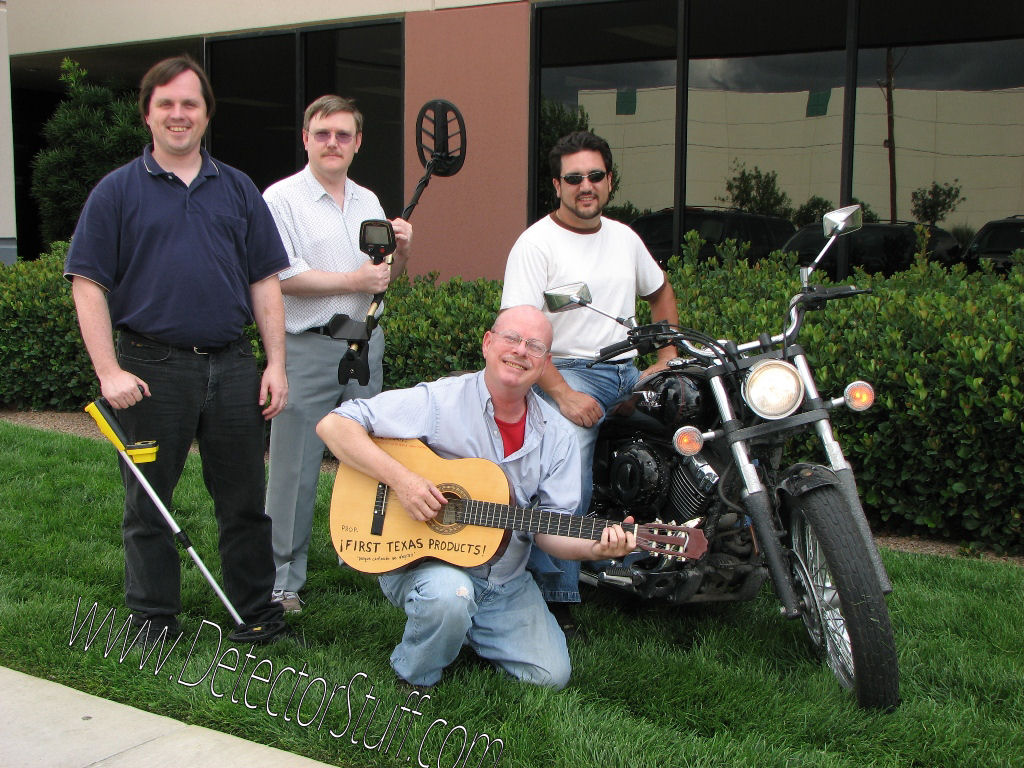
*Reprinted by permission of First Texas*
Posted originally on American Relic Hunters Official Teknetics Forum
Hello! and, Omega
Posted By: dave johnson
Date: Friday, 13 February 2009, at 1:10 p.m.
Hello, this is my first forum post on this website. Some of y’all I recognize from other venues.
Since the Teknetics Omega is in the process of being released to production, there will be a lot of curiosity about it. Most of the questions will relate to features and performance in the field. There’s no need for me to go into those matters, since other people will quickly fill in the details. What follows here is a bit of information which is probably better coming direct from engineering department.
Once the Omega gets into people’s hands, it’ll become obvious that there is some sort of relationship between the Tek Omega, and several earlier Fisher and Bounty Hunter products. Here’s what that relationship is.
The Omega circuitry and software are a major revision of the Fisher F5, which although it was a bit slow to “catch on”, is now getting good reviews. The basic software concepts of the F5 in turn, were derived from the F70, but not the code itself because the machines use completely different microprocessors. I was responsible for many of the software concepts in all these products, but John Gardiner wrote the code for the F70 and Jorge Anton Saad wrote the code for the F5 and the Omega. The F70 circuit platform is related to the F75 and Tek T2, which despite their differences all run at 13 kHz. The F5 and the new Tek Titanium series of which the Omega is a member, are a different family of circuits, all running at 7.8 kHz. The Bounty Hunter Platinum and Gold were an earlier version of this basic circuit platform.
The mechanical design of the Omega is a revision of the Bounty Hunter Platinum.
The Omega and F5 have their own unique user interfaces and different features, but both are simple and easy to use. The two machines are fairly similar in performance and in operating characteristics.
Since we came out with the Tek T2 several years ago, we’ve learned a lot about how to do tricky stuff in software but to keep the tricks hidden from the user so as to create less puzzlement on the part of the user. Old-timers will like the predictable analog feel of the Omega, even though what’s actually happening inside the machine is very different stuff from what went on in the older analog metal detector designs.
The basic performance and “feel” of the Omega is rather similar to that of the Delta and Gamma, about which there has been information posted on forums for several weeks. The differences are in mechanical construction and features.
HEADPHONE JACKS AND SEARCHCOIL CONNECTORS
The earlier Delta and Gamma were released with a non-locking DIN connector the same as the F5, and with an 1/8 inch headphone jack. With the release of the Omega, we are improving the Delta and Gamma design by changing it to have the T2-type searchcoil connector and both 1/4″ and 1/8″ headphone jacks which were developed for the Omega.
SEARCHCOILS
At the moment there are two searchcoils available for the Omega: the 10 inch elliptical concentric (standard), and the 8 inch round concentric (standard on the Delta and Gamma). A 5 inch DD coil and an 11 inch DD coil are under development with release expected early spring this year. When these additional coils are released, they will also be offered in a DIN connector version to work with the F5 and the earlier Deltas and Gammas.
PERFORMANCE
The Omega air tests on coins past 10 inches (25 cm)– not as hot as the more expensive Tek T2 and F75/F70 type machines, but close. Because of the difference in operating frequency, those 13 kHz machines will have a distinct edge on lower conductivity targets.
When it comes to target separation, the Omega is in the same league as the Tek T2 and the Fisher F75/F70 and F5. These are machines which have already earned a reputation for superb target separation.
How a machine performs “in the ground” on a particular target entails many variables, not the least of which is the operator knowing how to use the machine. So I will not say that the Omega will do this or that in the ground better or worse than some other specific machine. Suffice it to say that “in the ground” on coin-sized objects, it’s in the same league as the T2 and its successors. The 13 kHz platform machines will tend to have an overall edge on smaller targets.
SO WHAT DO I LIKE ABOUT THE OMEGA?
Straightforward simplicity, excellent performance, sense of direct connection between what’s in the ground and what you hear, and the completeness and refinement of the overall machine.
AND FINALLY……
Although I monitor this forum on a regular basis, I will not frequently post. I know lots of people would like to ask me lots of questions, most of which are ones I either can’t answer or don’t have time to answer. There are some very knowledgeable people posting on this forum who will be able to respond to most questions including some I myself would be unable to answer. Thank you.
–Dave Johnson
Chief Designer, FTP & Fisher
Omega Owner Manual Download HERE courtesy of Jorge Saad

